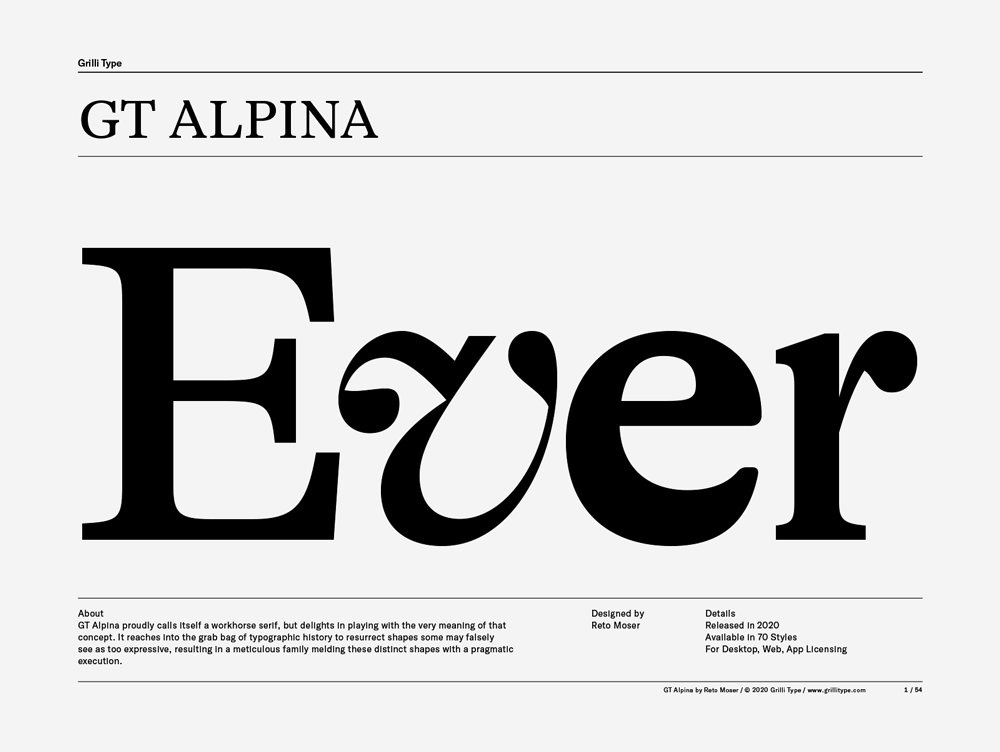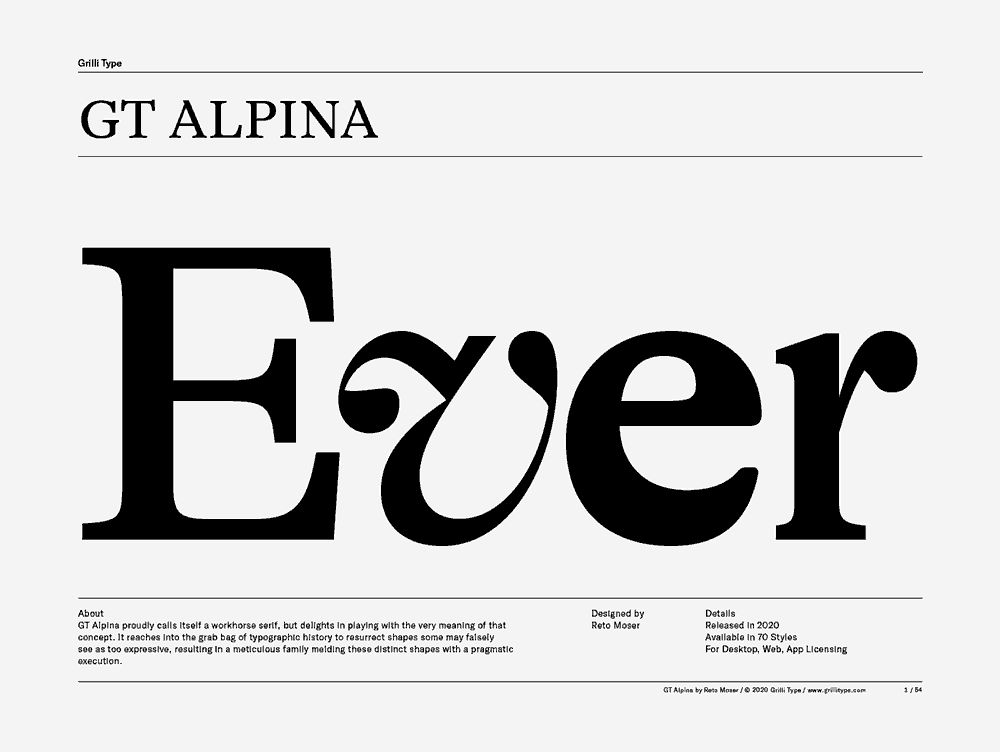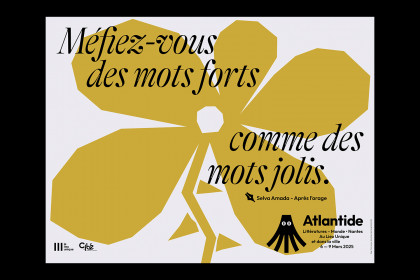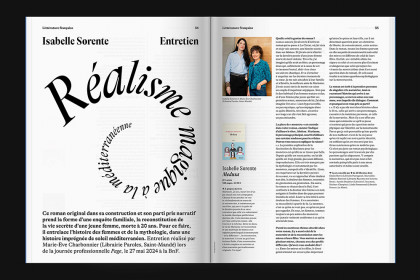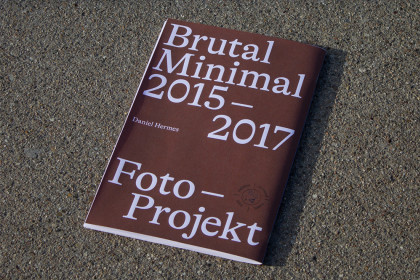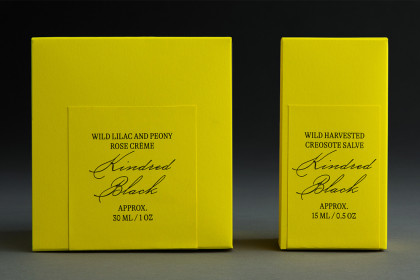GT Alpina
Family overview
- Condensed
- Thin Italic
- Light Italic
- Regular Italic
- Medium Italic
- Bold Italic
- Standard
- Thin Italic
- Light Italic
- Regular Italic
- Medium Italic
- Bold Italic
- Extended
- Thin Italic
- Light Italic
- Regular Italic
- Medium Italic
- Bold Italic
- Fine Condensed
- Thin Italic
- Light Italic
- Regular Italic
- Medium Italic
- Bold Italic
- Fine Standard
- Thin Italic
- Light Italic
- Regular Italic
- Medium Italic
- Bold Italic
- Fine Extended
- Thin Italic
- Light Italic
- Regular Italic
- Medium Italic
- Bold Italic
- Typewriter
- Thin Italic
- Light Italic
- Regular Italic
- Medium Italic
- Bold Italic
Subfamilies
- Standard ThinErhard Loretan, Peter Taugwalder, Ulrich Inderbinen Christian Almer, Gottlieb Samuel Studer, Alexander Burgener, Ernst Reiss, André Roch, Fritz Luchsinger
- Standard Thin ItalicMont Blanc, Monte Rosa, Dom, Weisshorn, Matterhorn, Dent Blanche, Grand Combin, Finsteraarhorn, Grandes Jorasses, Rimpfischhorn, Aletschhorn
- Standard LightWildlife such as ibex live in the higher peaks to elevations of 3,400 m (11,155 ft), and plants such as Edelweiss grow in rocky areas in lower elevations as well as in higher elevations
- Standard Light ItalicNorgay had reached 8,595 m (28,199 ft) the previous year as a member of the 1952 Swiss expedition.
- Standard RegularThe Swiss Alpine Club was founded in 1863 in Olten and it is now composed of 111 sections with 110,000 members.
- Standard Regular ItalicMont Blanc 4,810 m (15,781 ft), Monte Rosa 4,634 m (15,203 ft), Dom 4,545 m (14,911 ft), Weisshorn 4,506 m (14,783 ft), Matterhorn 4,478 m (14,692 ft)
- Standard MediumA mountain? Pffff, boooring! It could have been whiter as well… calls itself Mont Blanc, what a joke ⭑⭒⭒⭒⭒
- Standard Medium ItalicIt is a large, near-symmetric pyramidal peak in the extended Monte Rosa area of the Pennine Alps, whose summit is 4,478 metres
- Standard BoldMont Blanc, Monte Rosa, Dom, Weisshorn, Matterhorn, Dent Blanche, Grand Combin, Finsteraarhorn, Grandes Jorasses, Rimpfischhorn, Aletschhorn
- Standard Bold ItalicIn its most important stretch, over a length of four kilometers it climbs a height of 300 meters in 24 hairpin bends.
- Settings
Typeface information
GT Alpina proudly calls itself a workhorse serif, but delights in playing with the very meaning of that concept. It reaches into the grab bag of typographic history to resurrect shapes some may falsely see as too expressive, resulting in a meticulous family melding these distinct shapes with a pragmatic execution.
Typeface features
OpenType features enable smart typography. You can use these features in most Desktop applications, on the web, and in your mobile apps. Each typeface contains different features. Below are the most important features included in GT Alpina’s fonts:
- SS01
- Alternate J
Jungfrau
- SS02
- Alternate ?
¿Ascensión?
- SS03
- Alternate &
Piz & Palü
- SS04
- Alternate @
M@terhorn
- ONUM
- Oldstyle Figures
0123456789
- SMCP
- Small Caps
Greina Pass
Typeface Minisite
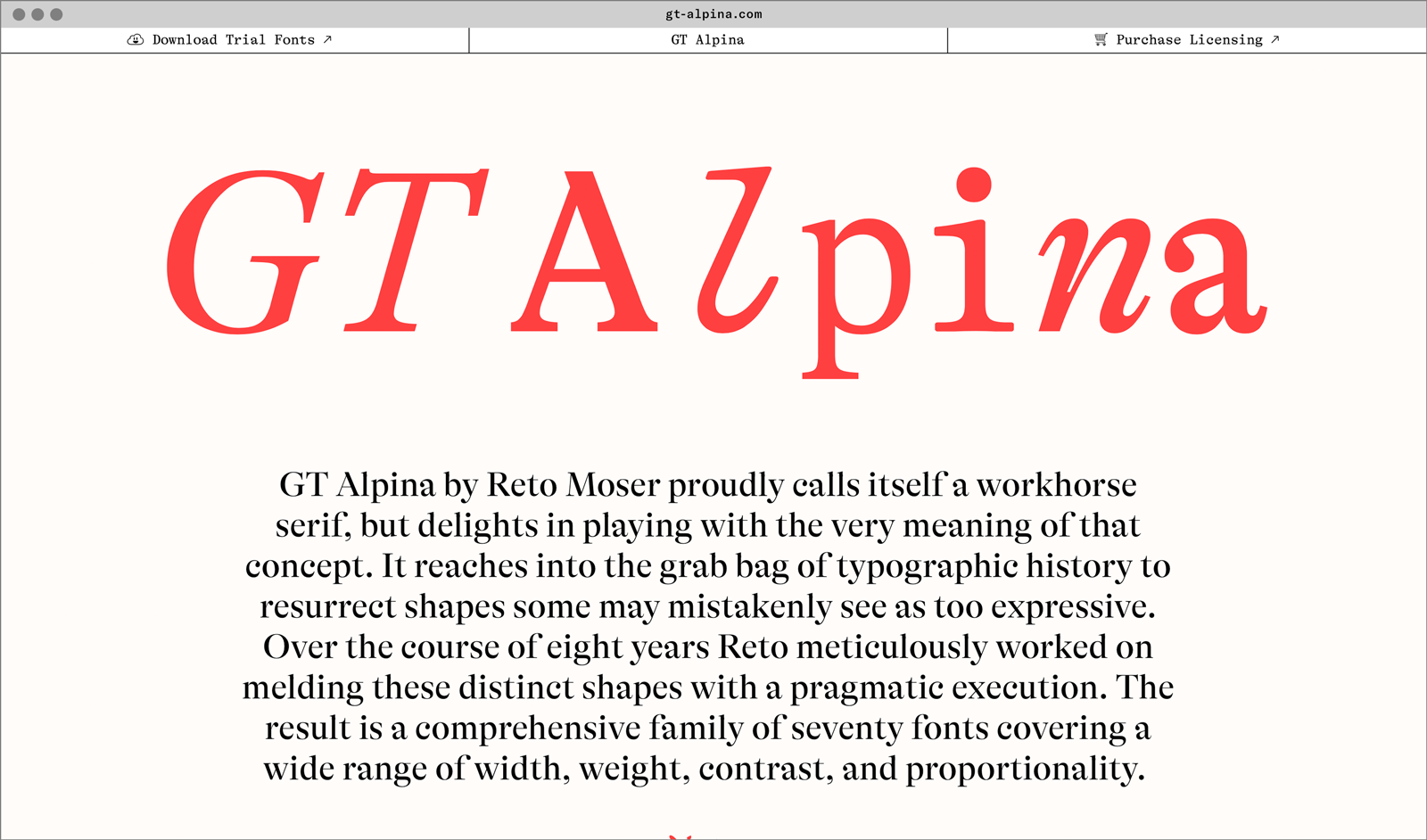
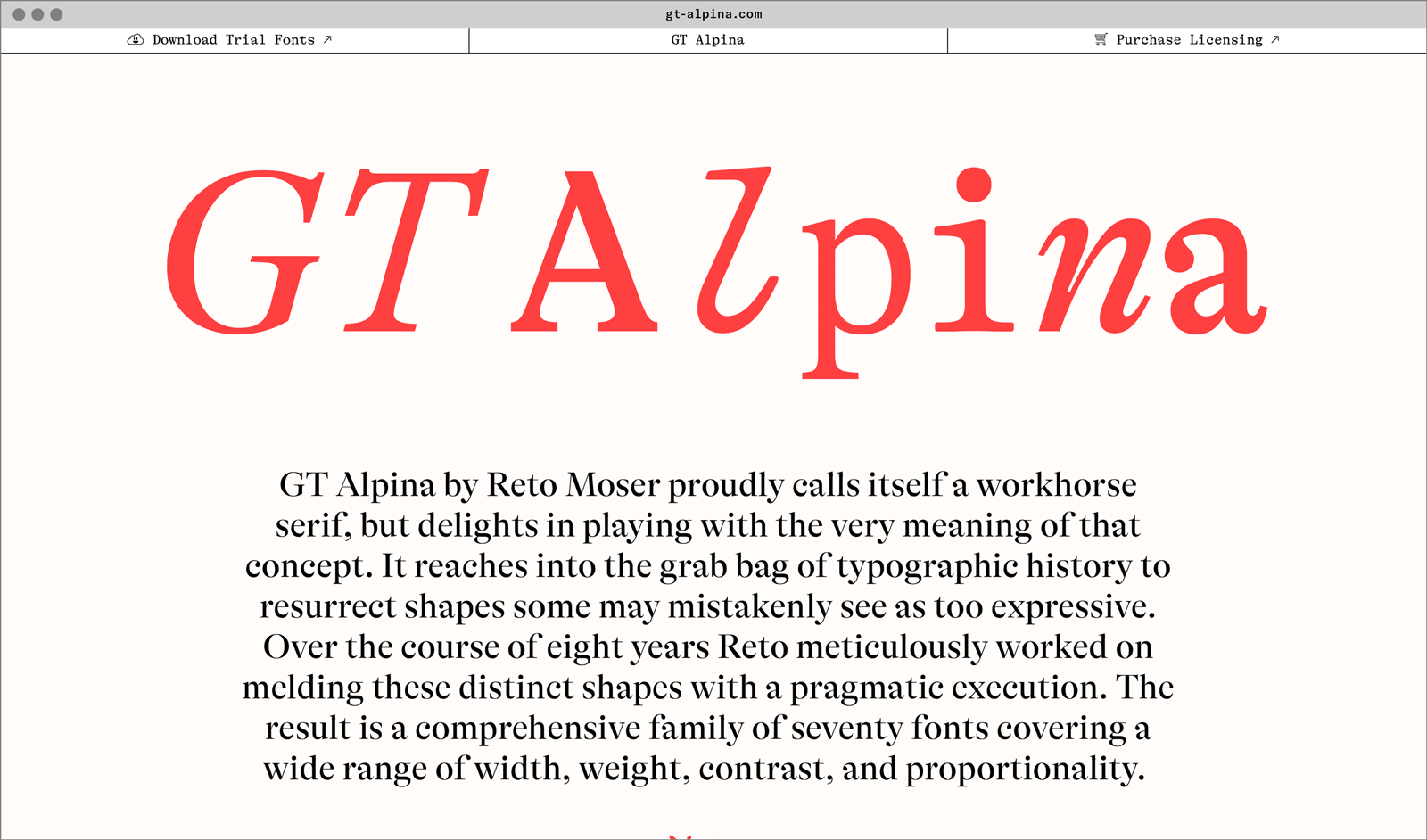
- Visit the GT Alpina minisite to discover more about the typeface family’s history and design concept.
GT Alpina in use
